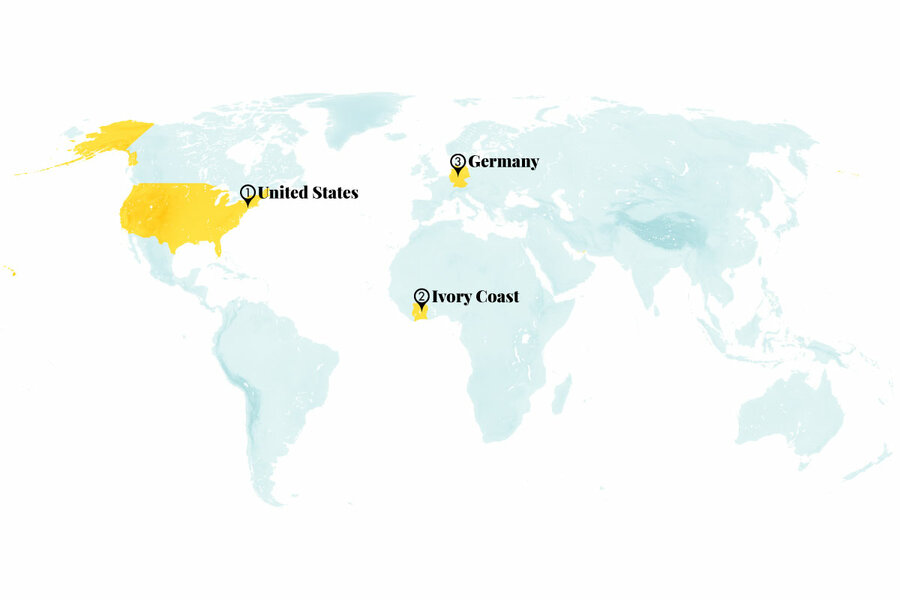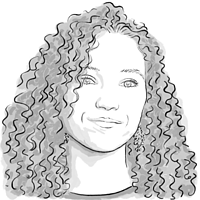What’s positive about ‘zero,’ and a shield that’s invisible
Loading...
1. United States
Hoboken, New Jersey, has eliminated traffic deaths for four years in a row. Between 2014 and 2018, there were 376 traffic-related injuries and three fatalities in the 60,000-person city located across the Hudson River from Manhattan, so Hoboken made an array of changes to create safer roads.
Among other things, the city removed drivers’ blind spots at intersections by restricting parking within 25 feet of crosswalks and programmed traffic lights to give pedestrians a head start before vehicles can turn.
Why We Wrote This
A story focused onIn our progress roundup, daunting goals are being achieved: On the ground in Hoboken, New Jersey, traffic fatalities are being eliminated. And high above in the stratosphere, the ozone layer is continuing to recover.
The city has seen no traffic deaths since 2018, and other accidents have decreased, too. In 2020, vehicles collided with 35% fewer pedestrians, 11% fewer cyclists, and 27% fewer vehicles than in 2019.
The new safety initiatives are part of the city’s Vision Zero pledge to eliminate all traffic-related injuries and deaths by 2030, based on an action plan that originated in Sweden in 1997. While Hoboken has higher population density and walkability and lower speed limits in general than many urban areas, experts say planning techniques can prove effective in any city. Around the country, nearly 43,000 people died in vehicle crashes in 2021.
Sources: NPR, Hoboken Vision Zero
2. Ivory Coast
An Ivory Coast entrepreneur developed a smartphone to serve those who cannot read or write. Alain Capo-Chichi developed the phone, called Open G, to make it easier for his parents, who received minimal education, to send messages or transfer money. The locally made phone allows users to access apps and services by speaking in voice commands in 16 local dialects.
In Ivory Coast, the literacy rate has grown from below 45% in 2010 to over 80% in 2019. Open G, which went on sale in July and has already sold several thousand units, is designed to serve around one-third of adults in Africa who are not literate. The device joins a growing list of smartphones designed and produced in Africa, including Mara Phones in Rwanda and SICO in Egypt.
Source: African Vibes
3. Germany
One of the oldest towns in Germany has transformed into an “edible city,” growing food accessible to all. Nestled in the Rhine River valley, the city of Andernach began planting organic food in its public green spaces in 2010. Since then, the city has grown a wide variety of produce, including zucchini, grapes, artichokes, and pumpkins, while also caring for bees for honey and chickens for eggs. Diverse species create habitats for birds, bees, and other insects.
Growing food locally has become more popular as a result of food chain instability and to cut down on carbon emissions. Out of 14 hectares (34 acres) of green space in Andernach, around 2 hectares are edible areas. “You just take what you need,” says one resident. “The only thing is you have to be quick once the fruits are ripe or they’ll all be gone!” The city is part of a European Union-funded project called the Edible Cities Network, which is running from 2018 to 2023. The city is working on cataloging its plants, nutrients, and water use to help other cities implement the model.
Source: Deutsche Welle
World
Substances known to deplete the ozone layer are at their lowest levels since 1980. Most of these human-made chemicals were phased out globally under the Montreal Protocol, signed by 46 countries in 1987. As a result of effective international cooperation, the most recent data shows levels of ozone-depleting substances (ODS) at 50% of their peak in the early 1990s.
“It’s great to see this progress,” said Stephen Montzka of the National Oceanic and Atmospheric Administration’s Global Monitoring Laboratory. “At the same time, it’s a bit humbling to realize that science is still a long way from being able to claim that the issue of ozone depletion is behind us.”
Given how slowly the ozone layer heals, it is expected to reach a near complete recovery by the middle of the century in most locations. The most worrisome hole in the ozone layer formed over Antarctica, where concentrations of ODS have fallen by 26%, and recovery is estimated by 2070.
Source: National Oceanic and Atmospheric Administration










